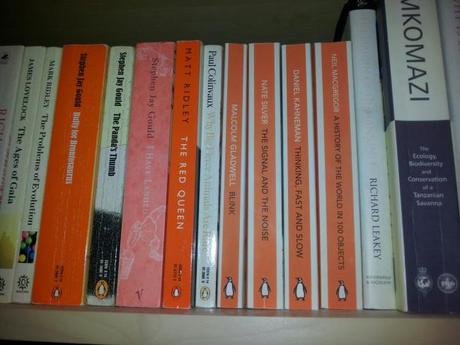
To recap, I have read three books which each explore how we make decisions. In my first post, I made observations about all three works. In this post, I will concentrate on ‘Thinking, Fast and Slow’ by Daniel Kahneman. As mentioned earlier, this book required the most effort to read–perhaps because it needed more System 2 thinking. Here are further thoughts about ‘Thinking, Fast and Slow’.
Much of the book is about System 1 thinking (swift and intuitive), but what I am really interested in is lazy, underplayed but swotty System 2. Yes, it is good to made aware of the fact that most of our thinking is actually carried out on a type of automatic pilot in which we make shortcuts, rely on bias and intuition, but what about when we don’t, what exactly is going on? Is there a story to tell here too?
And how much does everyone rely on System 1? The book contains descriptions of many different lab experiments in which individuals must respond to various scenarios. There is never any discussion about how the responses to these scenarios varied. It appears to be a blanket general response. As a marketer, grouping responses in such a ‘blocky’ way is unedifying. Do differences vary by demographics, such as age or gender? Or even something softer such as personality type? As I am not especially spontaneous but tend more towards evaluation and analysis in decision making, I would be tempted to claim that I try to go for System 2 thinking more often than not, but perhaps I am being rather naïve.
At the very least, we could raise the WEIRD challenge – namely that the research experiments are most likely to have relied on what has been shown to be an unrepresentative segment of humanity : those who are Western Educated Industrialized Rich and Democratic. It would be interesting to explore further.
In the book, System 1 and System 2 appear as clearly defined and distinguishable, but it is less clear whether this extends to being physically or physiologically distinct. There is much going on currently in brain scanning, and occasional references are made as to how thinking patterns can be analysed in this way. I am just curious as to how comprehensively this kind of analysis and matching can be made.
I was interested in reading that emotion impacts our thinking ability. In chapter five on Cognitive Ease, it appears that one could describe a perverse positive from unhappiness or bad moods – namely, that we are most likely to think harder (in System 2) when in this frame of mind. It says something about how we should approach decision making. Being gleeful risks being glib; being glum or grumpy begets more careful considerations. But I am not sure I could propose that as a coach!
‘Thinking, Fast and Slow’ is incredibly rich, with a wealth of ideas over which to ponder, many which are extremely relevant for marketing and communications. I haven’t touched on those – just read the book for yourself!
